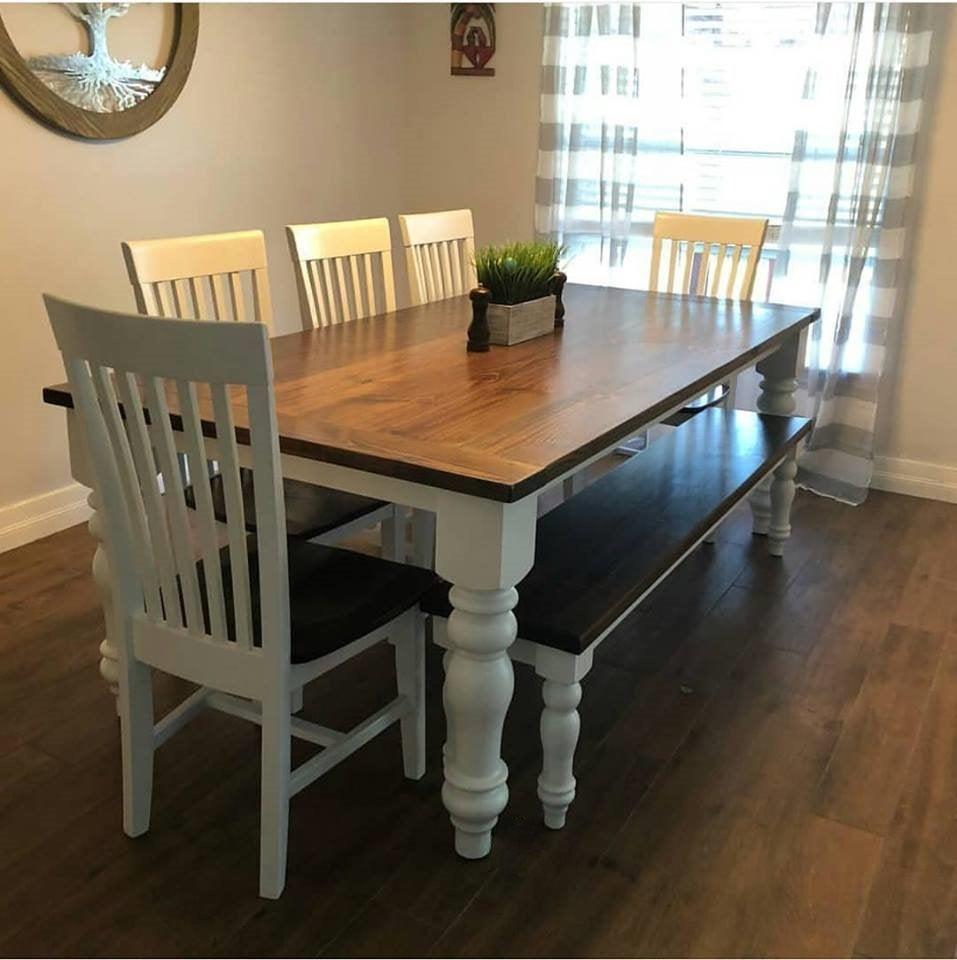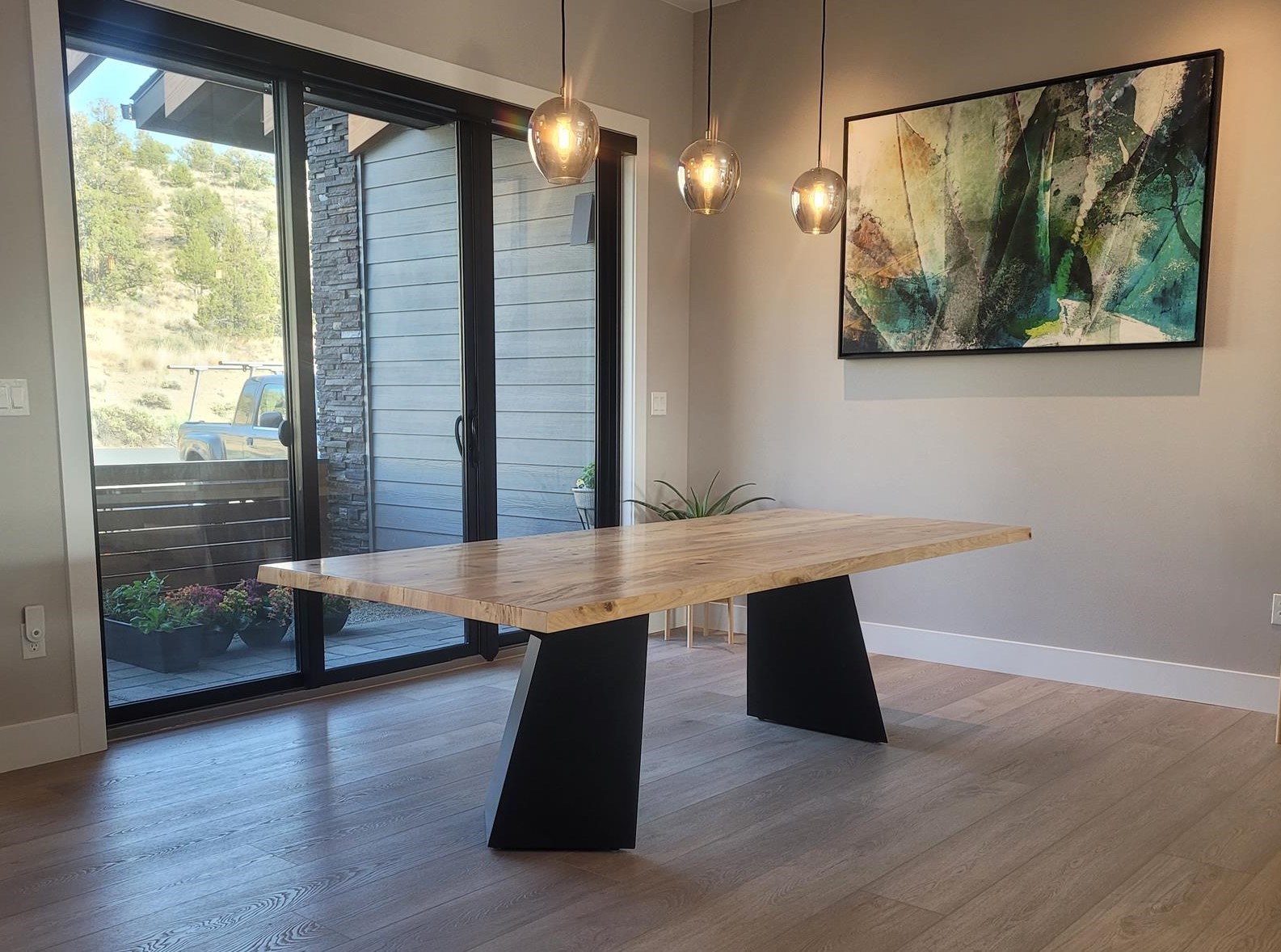Selecting the Perfect Dining Table: What Styles Job Best for Your Home?
Selecting the optimal dining table for your home can be a nuanced process that balances looks and performance. To navigate these options properly and discover a table that really enhances your home, take into consideration the following facets in information.
Evaluating Your Room
Evaluating the measurements and format of your eating area is a critical primary step in picking the best dining table. Begin by determining the size and size of the room, accounting for doorways, windows, and other architectural attributes that can affect table placement. This guarantees that your table not only fits but additionally permits for comfortable movement around it.
Take into consideration the variety of individuals you typically captivate. A table should accommodate your household's daily demands while using enough flexibility for occasional guests. Generally of thumb, assign at the very least 24 inches of table size per person to make certain a comfortable dining experience.
It's also necessary to preserve suitable clearance around the table. Ideally, there must be at the very least 36 inches between the table edge and walls or various other furnishings, making it possible for easy accessibility and motion. For rooms where chairs with arms or extra storage devices like buffets are involved, boosting this clearance to 48 inches is a good idea.
Illumination and ambience play substantial duties. Make certain that your table aligns with existing lighting fixtures or strategy for ample illumination services. This comprehensive spatial analysis assurances that your table not only fits literally yet additionally balances with your area's total functionality and aesthetic.
Popular Table Styles

Conventional dining tables typically include elaborate information, rounded legs, and abundant timber finishes, stimulating a feeling of ageless elegance. They are perfect for homes with timeless design or those aiming to include a touch of refinement to their dining area.
Modern eating tables focus on simplicity and clean lines, frequently including materials like glass and metal. These tables are suitable for contemporary areas, providing a sleek and uncluttered appearance that complements minimal style ideologies.
Rustic eating tables, on the other hand, highlight all-natural products and a handcrafted look - dining room table legs. They often include recovered wood and a distressed surface, developing a cozy and inviting ambience. These tables function well in farmhouse-style homes or those seeking a comfy, organic feel
Industrial dining tables integrate resources such as steel and wood, usually showcasing a practical aesthetic. This style is fit for lofts or metropolitan areas, including a touch of rugged beauty and longevity to the eating experience.
Each design supplies unique advantages, making it essential to pick one that straightens with your home's total design and your individual preferences.
Product Options
When selecting a dining table, the option of material plays a crucial role in identifying both the table's looks and performance. Timber, metal, glass, and composite products each offer unique advantages and obstacles, making it crucial to align the material with your home's decoration and lifestyle requirements.
Timber is a classic and functional option, readily available in ranges such as oak, walnut, and mahogany. Understood for its sturdiness and heat, timber matches both traditional and modern insides. It needs normal upkeep to stop scratches and warping.
Metal tables, commonly crafted from stainless-steel, light weight aluminum, or wrought iron, are commended for their contemporary appeal and effectiveness. They are especially suited for commercial or minimal setups yet can be susceptible to dents and may really feel cold to the touch.
Glass dining tables bring an air of sophistication and openness, perfect for smaller rooms as they create an impression of more space. While easy to tidy, glass can be susceptible to smudges and needs mindful managing to avoid chips and splits.
Composite materials, such as MDF and plywood, offer economical and customizable remedies, though they might do not have the durability of natural materials. Choosing the ideal material ensures your table is both a practical property and a visual pleasure.
Forming and Dimension Factors To Consider
After determining the suitable product for your dining table, the next factor to consider is selecting the appropriate form and size to fit your space. Conversely, rounded tables cultivate a feeling of intimacy and are superb for smaller eating locations, motivating discussion by removing edges and making everybody feel similarly included.
As useful source a regulation of thumb, designate at least 24 inches of table width per person to make sure comfy dining. Furthermore, take into consideration the table's clearance area: there ought to be at least 36 inches between the table edge and the wall surfaces or various other furnishings. Extending tables supply flexibility if you often host bigger events, supplying added seating when required without inhabiting added area daily.
Matching Your Decoration
Choosing a dining table that balances with your existing design is pivotal in developing a cohesive and inviting space. A streamlined, minimal table with tidy lines is perfect for a modern-day home, while a vintage, ornate table suits a much more standard setup.
Color and product are equally substantial. If your design features warm tones and natural materials, take into consideration a wood table to improve the organic feel. Alternatively, a glass or steel table might be better in a room dominated next by cool shades and industrial components. Take note of the finish, as it needs to mirror other furniture and fixtures to keep harmony.
Texture plays a critical duty also. A rough-hewn, recovered timber table can include character to a rustic space, while a sleek marble surface area can boost a lavish eating area. Finally, learn the facts here now take into consideration the range and percentage of the table in regard to the space dimension and existing furniture. A well-matched table not just improves aesthetic allure yet additionally enriches the total eating experience.

Verdict
Selecting the ideal eating table requires mindful factor to consider of space, style, materials, form, and size. Standard tables enhance classic insides with rich wood coatings, while contemporary tables suit modern setups with glass and steel.